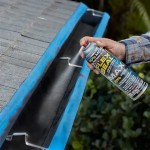How To Make Basement Stairs Not So Steep
Steep basement stairs can be a safety hazard, especially for young children and older adults. The steepness of stairs is measured by their rise and run. Rise refers to the vertical height of each step, while run is the horizontal depth of each step. A steep stair has a high rise and a short run, making it challenging to climb and descend. Fortunately, there are several strategies homeowners can employ to make their basement stairs less steep and safer.
Adding a Landing
One of the simplest and most effective ways to reduce the steepness of basement stairs is to add a landing. A landing is a flat platform that breaks up the staircase, providing a resting point for people climbing or descending. To add a landing, the existing staircase needs to be modified. This often involves cutting back a portion of the existing stringers (the structural pieces that support the stairs) to create space for the landing. The new landing would then be built onto the existing framework, and the steps would be adjusted to accommodate the new platform. The landing should be at least 3 feet deep to ensure a safe and comfortable resting area.
The location of the landing is crucial. Ideally, the landing should be placed midway up the staircase, allowing for a more gradual ascent and descent. However, the location of the landing will depend on the existing layout of the basement and the space available. If there is limited space, a smaller landing can be added towards the bottom of the stairs or at the top.
Modifying the Rise and Run
Another approach to making basement stairs less steep is to modify the rise and run of the individual steps. This typically involves adjusting the stringers, which support the steps, to alter the height and depth of each step. Increasing the run (horizontal depth) of the steps while decreasing the rise (vertical height) results in a more gradual staircase. However, this alteration should always be done with professional guidance, as it involves structural modifications and needs to adhere to building codes.
It is critical to note that modifying the rise and run of existing stairs can be a complex process. It may require the removal and replacement of steps, and the stringers may need to be adjusted or reinforced. Before proceeding with any modifications, consult with a licensed contractor or engineer to ensure the modifications are structurally sound and meet local building codes.
Using Handrails
Installing handrails on both sides of the basement stairs is a crucial safety measure, especially when the stairs are steep. Handrails provide support and balance, reducing the risk of falls. They should be securely mounted to the wall and the stringers at a height of 34 to 38 inches above the stair treads. There should also be a handrail along the wall side of the stairs to ensure adequate support.
When choosing handrails, consider the materials and design. Options include wood, metal, and composite materials. Choose a material that complements the existing décor of the basement and is easy to grip. The handrail should be smooth and free of any sharp edges or protrusions to prevent injury.
Additional Tips
Here are some additional tips for making basement stairs less steep and safer:
- Adequate lighting: Ensure the basement stairs are well-lit with sufficient lighting to prevent tripping hazards. Consider using a combination of overhead lights and step lights to illuminate the entire staircase effectively.
- Non-slip surfaces: Choose non-slip materials for the stair treads to prevent slipping accidents, especially during wet conditions. Options include carpet, textured tile, or rubberized treads.
- Clear clutter: Remove clutter from the staircase and the surrounding area to create a clear path and prevent tripping hazards.
Making basement stairs less steep and safer is crucial to prevent accidents and promote accessibility. By implementing these strategies, homeowners can create a safer and more comfortable environment for all, ensuring a safer and more enjoyable basement space.

How To Make Steep Stairs Safer On A Budget

How To Convert Bottom Of Straight Stairway Three Step Winder Easy Home Remodeling Tutorial Youtube

How To Make Steep Stairs Safer On A Budget

This Could Be Your Final Solution To Problem Fixing Small Steps With Tall Risers Make Safe

Our Magazine Worthy Diy Basement Stairs Makeover Beautiful On A Budget This Life

How Can I Best Change A Steep Staircase Into Safer One Hometalk

How To Increase Individual Stair Step Depth For The Entire Stairway Home Remodeling Tips

Basement Stair Stringers By Fast Stairs Com

Our Magazine Worthy Diy Basement Stairs Makeover Beautiful On A Budget This Life

My Stairs Are Too Steep How Can I Make Them Better







